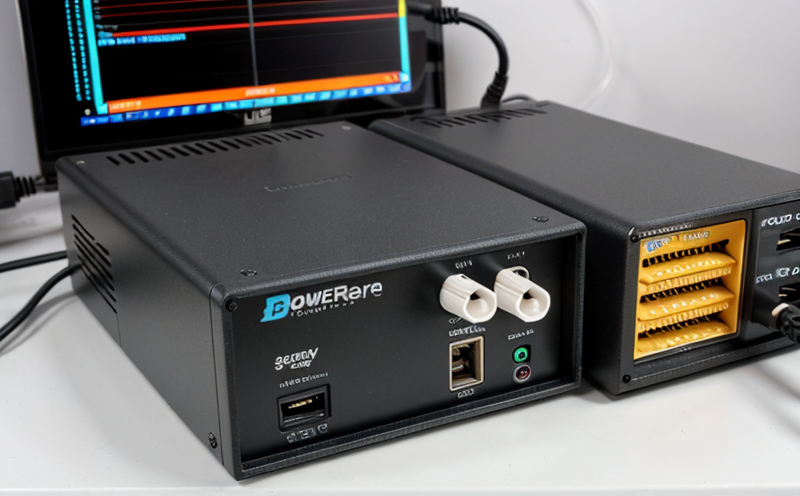IEC 61558 Safety Testing for Power Transformers in Chargers
The International Electrotechnical Commission (IEC) publication IEC 61558 sets the standards for safety and performance of power transformers, which are integral components in chargers. This standard is crucial for ensuring that power supplies meet stringent safety requirements to prevent electrical hazards such as overheating, short circuits, or fires.
The scope of IEC 61558 covers various aspects including insulation, cooling systems, and protection against overcurrents and overvoltages. Transformers in chargers are subjected to rigorous testing to ensure they meet these stringent requirements. This process involves detailed inspections, electrical stress tests, thermal analysis, and validation of protective devices.
Quality managers and compliance officers must ensure that their products comply with IEC 61558 to avoid legal issues and ensure product safety in the market. R&D engineers benefit from this testing as it helps them understand the limitations and capabilities of transformers used in chargers, thereby improving design iterations. Procurement teams can leverage these tests to verify that the components they source meet international standards.
The testing process for IEC 61558 typically involves:
- Visual inspection
- Dissipation factor measurement
- Dielectric strength test
- Insulation resistance measurement
- Thermal analysis and verification of cooling systems
- Testing for protection against overcurrents and overvoltages
The acceptance criteria for transformers in chargers are stringent. They must withstand specified voltage levels without damage or degradation, pass insulation tests with flying colors, and ensure that their protective devices function as expected under various fault conditions.
| Test Parameter | Description | Achievable Criteria |
|---|---|---|
| Dissipation Factor Measurement | Measures the ratio of a loss angle to a tangent of the angle between current and voltage in an electrical circuit. | <1.5% at 20°C |
| Dielectric Strength Test | Tests the ability of insulation to withstand high voltages without breaking down or degrading. | Minimum breakdown voltage: 4 kV AC for transformers with a rated power above 1 kW |
The detailed testing ensures that chargers are safe for consumers and can be used in diverse environments. This compliance not only protects end-users but also enhances the reputation of manufacturers by demonstrating commitment to safety and quality.
| Application Example | Description |
|---|---|
| Battery Charger for Smartphones | A battery charger for smartphones must comply with IEC 61558 to ensure the transformer operates safely under various charging conditions. The transformer must withstand high voltages and currents without overheating or causing electrical hazards. |
| Medical Device Charger | In medical devices, where safety is paramount, transformers in chargers must meet stringent IEC 61558 criteria to ensure safe operation under all conditions. This includes robust insulation and protection against overcurrents and overvoltages. |
By adhering to these standards, manufacturers can guarantee the safety of their products while also ensuring compliance with international regulations. This testing is not only a requirement but also a key factor in maintaining trust between consumers and manufacturers.
Why Choose This Test
Selecting IEC 61558 for power transformers in chargers ensures that the product meets global safety standards, which is essential for market access. Compliance with this standard not only protects users from electrical hazards but also enhances brand reputation and customer trust.
Compliance officers benefit greatly from adhering to these tests as it helps them navigate complex regulatory environments. By meeting IEC 61558 requirements, they can avoid costly legal issues and ensure that their products are safe for international markets.
R&D engineers find this testing invaluable as it provides detailed insights into the performance capabilities of transformers in various charging scenarios. This data is crucial for iterative design improvements and ensuring product robustness under real-world conditions.
Procurement teams can leverage IEC 61558 to source components that meet international standards, thereby reducing risks associated with non-compliant products. By choosing suppliers who adhere to these stringent tests, they ensure that their chargers are safe for end-users and compliant with global regulations.
International Acceptance and Recognition
The IEC 61558 standard is widely recognized and accepted across the globe. It ensures that power transformers in chargers meet uniform safety standards, thereby promoting international trade without compromising on quality or safety.
Countries around the world have adopted this standard as a benchmark for charger manufacturing. By adhering to IEC 61558, manufacturers can ensure that their products are not only safe but also compliant with global regulations, thus facilitating easier market entry and broader customer reach.
The acceptance of this standard is further reinforced by its alignment with other international standards such as ISO, ASTM, EN, and IEC. This harmonization ensures consistency in safety criteria across different regions, making it easier for manufacturers to comply globally.





